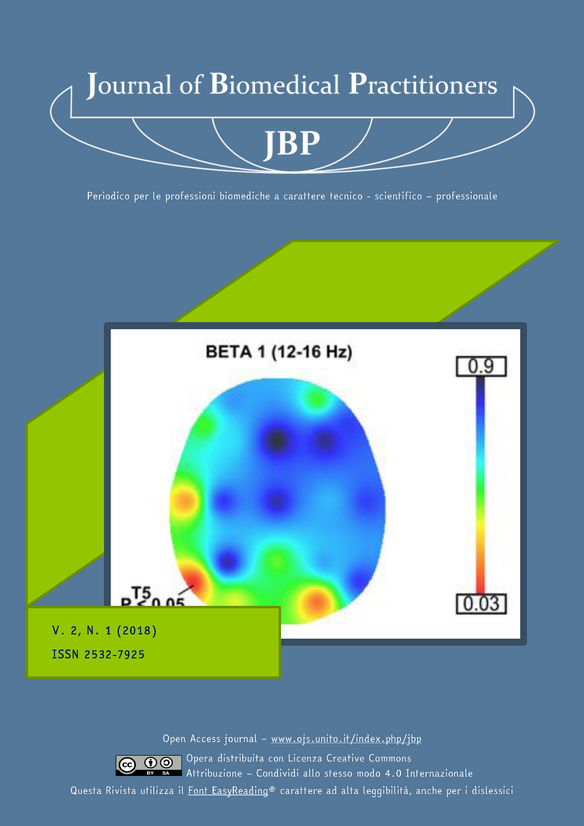Breath – Hold Techniques compared in the breast cancer treatment
Main Article Content
Abstract
The dose delivered to the left anterior descending artery (LAD) in radiotherapy of left-sided breast cancer increased risk of myocardial Infarction. In particular, it has been shown that twenty years after radiotherapy to the left breast cancer there is a double probability to infarction compared with patients treated with radiation therapy who have tumors in right breast.
All of which has led with the use of multiple irradiation techniques to minimize the dose to anterior descending artery, such as the deep inspiration breath-hold technique (DIBH) that can decrease radiation dose delivered to the heart. The study was performed on a TrueBeam and ClinaciX Varian linear accelerators, which is equipped with Varian Realtime Position Management (RPM) system, and BrainLAB ExacTrac gating systems. In this study, the two systems were assessed on accuracy of both motion tracking and radiation delivery control. The two techniques allow to quantify and compensate the respiratory movement to analyse the organ motion problems.
In addition, we compared times of patient positioning, setting and treatment delivery by the verification of the treatment fields position on different days to document. We analysed advantages and criticalities of both systems trying to explain how these variables can be affect by delivery and workflow.
This study involved 16 female patients diagnosed with left sided breast cancer under 65 years’ patients treated by adjuvant radiation therapy; the first 8 treated with the Breath Hold Tracking technique and the next 8 with Breath Hold Gaiting. Patients were followed up during planning and delivery treatment.
From the comparison, positive and negative sides emerge. We present an extensive comparison between the use of RPM and Tracking systems on their technical capabilities and operating approach. Infrared tracking system continuously monitors patient positioning throughout treatment that allows for optimal patient positioning in all six degrees of freedom enabling an improved setup accuracy compared to translational corrections alone. In addition, daily patient setup and delivery treatment was lowest than RPM system. In addition, systematic and random errors was lowest than RPM system, even if only little. On the other and, RPM gating system provides both respiratory gating for respiration-synchronized imaging and the treatment beam is turned on, and RPM automatically gates the beam on and off instantly according to the selected upper and lower gating thresholds.
The Gating technique, performed through the RPM system, has the advantage of delivering the radiant dose to the patient only when it is able to maintain the breath within the pre-set band. The main disadvantage is that this technique requires a greater active collaboration on the part of the patient.
The possibility of having both methods guarantees a greater number of patients the opportunity to perform breath hold therapy, order safeguard possible future radio-induced cardiac pathologies.Downloads
Article Details
The authors agree to transfer the right of their publication to the Journal, simultaneously licensed under a Creative Commons License - Attribution that allows others to share the work indicating intellectual authorship and the first publication in this magazine.

